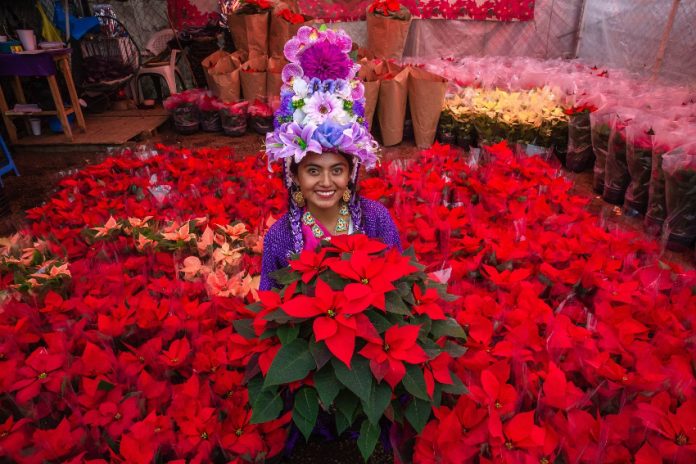Flower growers from seven states around the country have started the harvest of the nochebuena flower (also known as poinsettia) in time for the holiday season.
A growing staple of the Christmas season worldwide, it is believed that the nochebuena flower was discovered by the Mexica leader Moctezuma in the southern parts of Mexico, who then took it to his palace in Tenochtitlan to use in ceremonies and rituals.
Later, with the arrival of the Spanish conquerors, the Franciscan monks used the plant to decorate altars and started calling it nochebuena since it bloomed during the Christmas festivities (Christmas Eve is known as nochebuena in Spanish). The flower was first introduced to the United States in 1825 by U.S. ambassador to Mexico, Joel Roberts Poinsett, and came to be known as “poinsettia”.
Because the cultivation process takes approximately six months, producers started preparing the land to plant cuttings in May in order to have the flowers ready for November.
Morelos, Mexico City, Puebla, Jalisco, the State of México, Michoacán, and Oaxaca are the largest producers of nochebuenas, with the leading municipalities being Xochimilco, Cuernavaca, and Atlixco.
According to data from the Agricultural and Fisheries Information Service (SIAP), the 2021 sale of nochebuena flowers reached 17 million plants worth 668.5 million pesos (around US $34.4 million), which were planted in an area of 257 hectares. However, 2020 and 2021 were difficult years for growers, registering losses of up to 50% according to José Francisco León Santiago, director of a nursery in Atlixco, Puebla, as quoted in El Universal newspaper.
Puebla, which ranks as the third-highest in production of poinsettias, is pushing to become the leader in production of the seasonal flower. To that end, the first edition of the Ruta de las Mil Flores (Route of a Thousand Flowers) was inaugurated last week – an event that expects to sell more than 2 million flowers and that will run until the end of the season. For this holiday season, Puebla’s Ministry of Economy forecasts revenues of up to 130 million pesos (US $6.7 million).
Poinsettias grow wild from Sinaloa to Chiapas, and there are 30 varieties today – including white, yellow, and pink – which are exported to countries like the United States, Japan, China, France and Spain.
With reports from Milenio and El Universal Puebla
